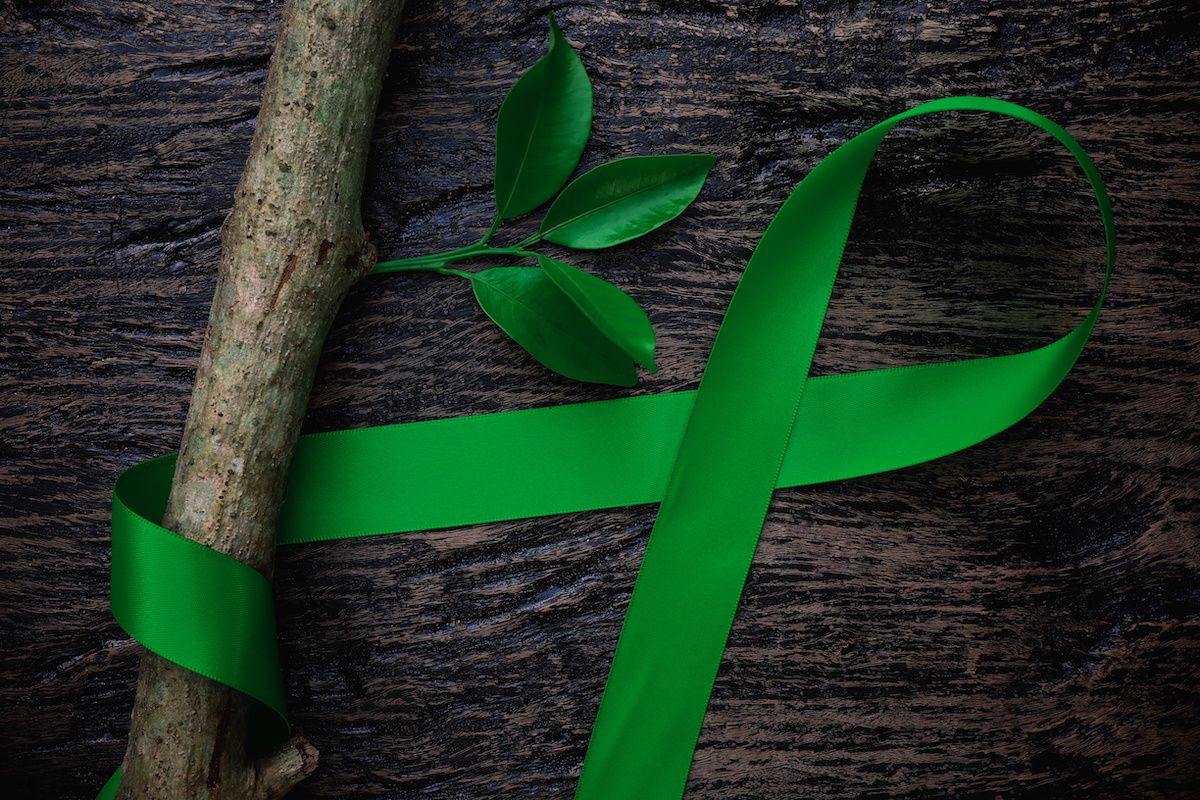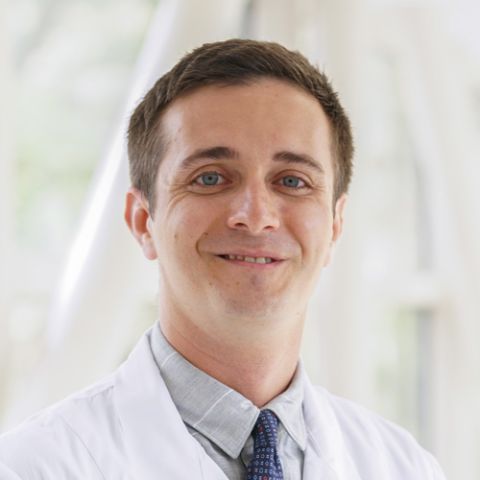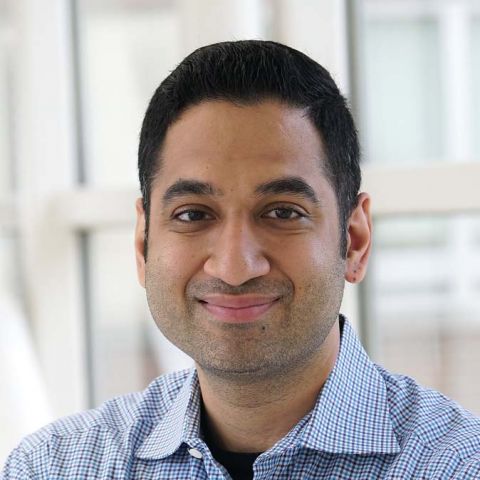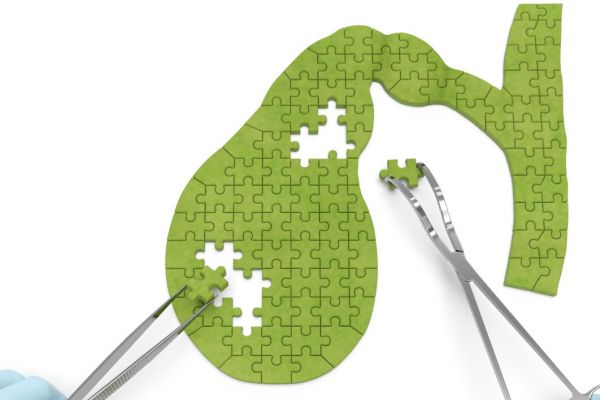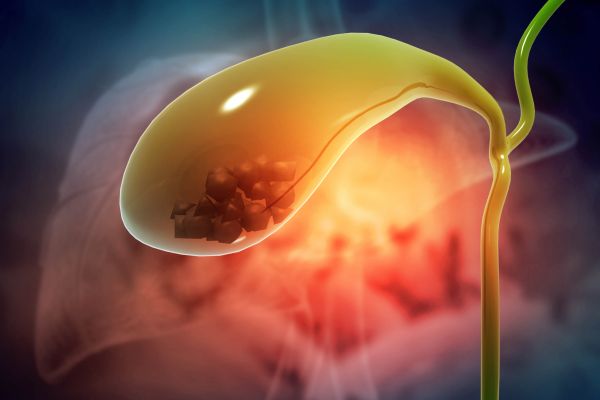Relying on faith carries him through treatment for bile duct cancer
One day in February 2021, Wayne, age 70, had a heart-to-heart conversation with Roswell Park surgical oncologist Leonid Cherkassky, MD, about a recommended surgery to remove a bile duct tumor. “Dr. Cherkassky told me that the odds for the surgery’s success were about 75%. I told Dr. Cherkassky, ‘I don’t care if the odds are 1%. I have a master physician in heaven who watches over me, and it’ll be okay. Let’s do this,’” Wayne says.
And there you have Wayne’s philosophy of dealing with cancer and life: “Faith, attitude and gratitude.”
Fittingly, Wayne’s cancer story began as he attended a church service remotely on a Sunday in October 2020. “I felt absolutely fine, and the next thing I remembered was my wife trying to wake me up. I’d passed out and was sweating, and my wife immediately drove me to the local ER. The ER team couldn’t find any conclusive reason for me passing out but kept me overnight for observation. While I was there, at 4 a.m., my heart stopped again for about 15 seconds.”
Wayne soon learned he has a heart condition that causes occasional malfunctioning of the electrical pulse that signals the heart to beat, so he needed to have a pacemaker implanted. During his presurgical CT scan, doctors discovered a tumor in Wayne’s liver. After a liver biopsy at another hospital was deemed inconclusive, Wayne quickly made an appointment at Roswell Park, where a biopsy showed that he had cholangiocarcinoma, or bile duct cancer.
Bile duct cancer often grows silently
This rare cancer type grows from the bile ducts within the liver, the network of tubes that carry bile from the liver and gallbladder to the small intestine to aid digestion. Wayne’s cancer had grown from bile duct cells into a large tumor occupying most of the right part of the liver and touching many large and important veins and arteries.
As in Wayne’s case, cholangiocarcinoma is often discovered incidentally during other medical tests, because typically it does not cause any noticeable symptoms until late stages. The news was “a punch to the gut, from feeling like an active, healthy person to a few weeks later finding out I needed a pacemaker and had a malignant tumor in my bile duct and liver,” says Wayne.
Once his pacemaker was installed, Wayne began treatment at Roswell Park. “I can’t say enough great things about Dr. Cherkassky. He was clear and caring. He even gave me his personal cell phone number and told me to contact him whenever I had any questions or concerns. Two times Dr. Cherkassky called me on a Saturday to update me and answer questions.”
Wayne underwent two and a half months of chemotherapy to shrink the tumor. However, tests the following month showed that the tumor was still present. "The tumor didn’t shrink, but it also didn’t grow. Dr. Cherkassky then presented me with three options: continued chemotherapy; a liver transplant, which would have to be done at another hospital when a suitable liver became available; or an embolization procedure and then surgery at Roswell Park to remove the tumor. That’s when I expressed my faith in Dr. Cherkassky and the surgical team at Roswell Park, but even more so, in the hands of the master physician in heaven.’”
Embolization shrinks the tumor
Roswell Park interventional radiologist Omar Hasan, MD, performed the embolization. In this procedure, tiny particles are injected into the portal vein of the right side of the liver to create an embolism, or blockage, which cuts off the blood supply to the tumor while increasing the blood supply to the healthy, left side of the liver. Wayne learned that the liver is the only human organ that can regenerate itself — and regenerate it did. “In the following weeks, my liver grew 6.5%, exceeding the desired growth rate of 2%,” Wayne recalls.
When it came time for the surgery to remove the bile duct tumor, every bit of Wayne’s faith would be needed. “What was expected to be a six-hour surgery turned into an even more complicated 11-hour procedure. My gallbladder, bile duct, the tumor itself and 70% of my liver needed to be removed. But with the help of my Heavenly Father, combined with excellent care and my physical and mental strength, I am still here,” Wayne declares.
Wayne recovered at Roswell Park for eight days. “The day after my surgery, I started walking laps around the nurses station. That day I was able to do three laps, and each day I tried to go a little further. By the time I was ready to leave, I was walking around the unit 21 times a day.”
Why Roswell Park for Choloangiocarcinoma?
Find out what makes Roswell Park unique in diagnosing and treating bile duct cancer.
Learn MoreNow, nearly three months after surgery, Wayne is doing well. “The tumor margins on the tissue are clean, except for one spot where the tumor could not be removed because it was too close to a vein. That area is being treated with radiation and chemotherapy pills for five weeks. Once I finish the radiation, I will have a month off, and then be treated with IV chemotherapy.”
While Wayne admits that occasionally he feels tired and nauseous from his treatment, he likes to keep himself as physically active and emotionally strong as possible. “When I worked as an educator, I always told my students that ‘attitude determines altitude.’ Being positive and strong, believing in yourself and others, and having faith in God will help you get through challenges in life.”
As he looks to the future, Wayne continues to work in the yard, spend time with his wife, grown children and eight grandchildren, and is making plans for some upcoming mission projects. “God isn’t done with me yet!”
Editor’s Note: Cancer patient outcomes and experiences may vary, even for those with the same type of cancer. An individual patient’s story should not be used as a prediction of how another patient will respond to treatment. Roswell Park is transparent about the survival rates of our patients as compared to national standards, and provides this information, when available, within the cancer type sections of this website.
